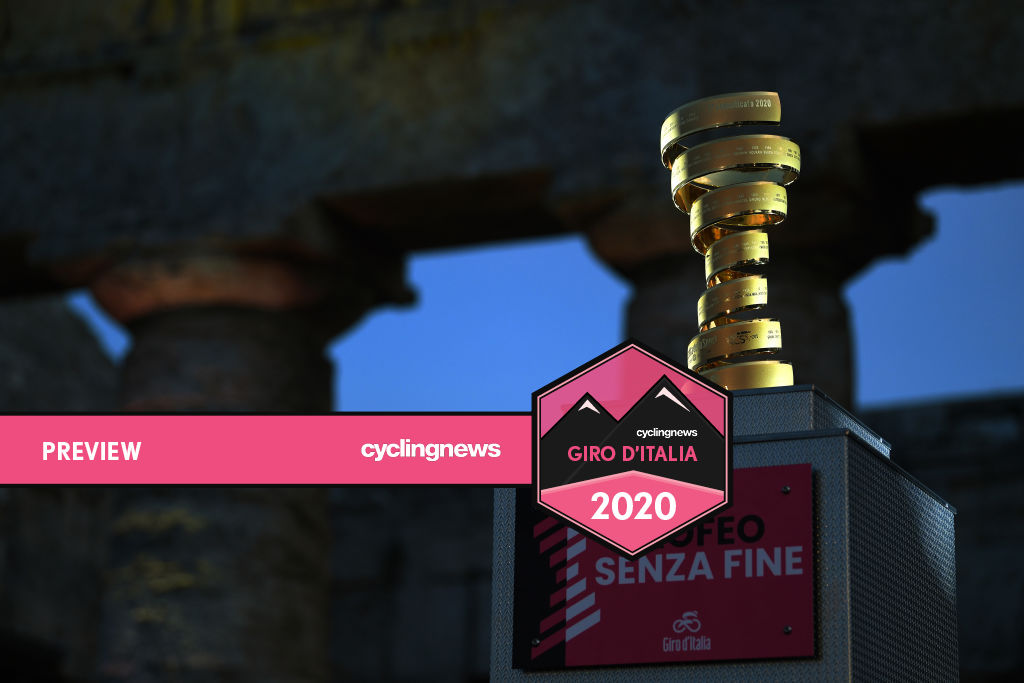Giro d'Italia: Downhill opening time trial likely to create big gaps
Stage 1 preview: Overall contenders at a disadvantage

When Giro d'Italia favourite Simon Yates (Mitchelton-Scott) said the opening time trial was the worst kind of course for him, it’s not hard to understand why: with so many fast downhill sections and broad avenues, the more powerfully built chrono specialists will be in their element on Saturday - and climbers like Yates will likely be at a real disadvantage.
What could increase the damage inflicted by the time triallists is that, at 15.2 kilometres, this year's opening time trial is also unusually long.
In the past 30 years, in fact, there have only been two first weekend stages that, as individual time trials bear any similarity. Stage 2 of the 1995 Giro was a 19-kilometre course to Assisi where Tony Rominger gained a massive 47 seconds on his rivals, and in 1990, a 13-kilometre course in Bari where Gianni Bugno took a much less significant three seconds on prologue specialist Thierry Marie. Interestingly, both times that day’s stage winner was the outright winner as well.
But as for more recent Giro history, neither Bologna last year - eight kilometres long, albeit with a hefty climb at the end - nor the undulating 9.7km course through Jerusalem in 2018, were anywhere close to that distance. This course, running from the stone flagged streets of an ancient hilltop village, Monreale, on urban roads to the heart of modern-day Palermo, could be a much tougher challenge.
The only point where there is any kind of a climb on Saturday is arguably where it will matter the least - right at the start. As soon as the riders roll down the starting ramp at the foot of the Monreale village, they find themselves heading uphill on a sharp right hand bend. Then the well-surfaced road climbs for a kilometre at most, but although there is one steep ramp of 18 per cent, the toughest part on the ascent is very short, and the road undulates enough, and even briefly dips once, for riders to recover quickly from the effort. Then when they rattle through a medieval underpass, past Monreale’s world-famous twelfth century cathedral and back out of the square, that is all the climbing done for the day.
Afterwards comes a spectacularly fast, straight downhill segment of well over two kilometres in what is the only exposed section of the course as the road comes down the side of the Monreale hill and into the outermost suburbs of Palermo. The end of this fastest part of the descent is only broken by two hairpins in quick succession where riders will be testing their brakes to the maximum.
Having reached the outskirts of Palermo after about three kilometres, the defining central segment of the time trial course continues to be relentlessly downhill, albeit on a much easier gradient and with not a corner in sight. Rather the Corso Calatafimi street is a broad, mostly treelined boulevard which will again enable the riders to churn a huge gear for kilometre after kilometre. Even when the route crosses a huge roundabout, through the Porta Nuova gateway and then dives into the older central area of Palermo, there is no change in direction, or indeed, the gentle two or three percent downhill gradient.
Get The Leadout Newsletter
The latest race content, interviews, features, reviews and expert buying guides, direct to your inbox!
After eight kilometres of mind-numbing straightaway, broken only by those two hairpin bends, and having crossed the emblematic Cuatro Canti square in the oldest part of Palermo, the route finally veers left onto another broad, modern-looking boulevard, the Via Roma. But in the last five kilometres of the course, there are again only five or six corners, none of them particularly technical. That said, the last 180 degree turn with about two kilometres to go will see riders slow to a near standstill.
The finish is, once again, preceded by a very slight downhill, giving riders the perfect opportunity to accelerate all the way to the line on the Via della Libertà, and for the out-and-out time triallists to maximize what could already be a significant advantage. Because while some opening time trials may be little more than a way of establishing a symbolic pecking order between the favourites, long-term in the GC battle, this one could actually matter.
Alasdair Fotheringham has been reporting on cycling since 1991. He has covered every Tour de France since 1992 bar one, as well as numerous other bike races of all shapes and sizes, ranging from the Olympic Games in 2008 to the now sadly defunct Subida a Urkiola hill climb in Spain. As well as working for Cyclingnews, he has also written for The Independent, The Guardian, ProCycling, The Express and Reuters.
